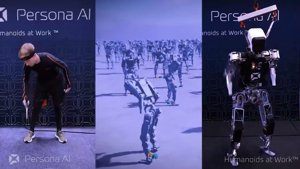AI’s Next Frontier: What to Expect at NVIDIA GTC 2025
The tech world’s eyes are firmly fixed on San Jose as NVIDIA prepares to host its annual GPU Technology Conference (GTC) from March 17-21, 2025. Often considered the premier event for AI innovation, this year’s conference promises groundbreaking announcements that could reshape the technological landscape for the coming year. With 25,000 in-person attendees and an estimated 300,000 virtual participants expected, GTC 2025 will serve as the central nervous system of AI advancement for the week, featuring more than 1,000 sessions with 2,000 speakers and nearly 400 exhibitors showcasing next-generation technologies1.
As the company driving much of the AI revolution through its hardware, NVIDIA’s announcements carry significant weight for developers, researchers, and the market at large. CEO Jensen Huang’s highly anticipated keynote, scheduled for Tuesday, March 18, will set the tone for the conference and likely introduce innovations that could define the next generation of AI computing capabilities.
The Main Attractions: What’s on the Horizon
Next-Generation GPU Architecture
The spotlight will undoubtedly shine on NVIDIA’s newest GPU technologies. Industry insiders expect a significant focus on the Blackwell B300 series, codenamed Blackwell Ultra, which Huang previously confirmed for release in the second half of this year. These chips are rumored to offer substantially higher computing performance and pack an impressive 288GB of memory—a critical feature for training and running increasingly memory-hungry AI models2.
But that’s not all—attendees should prepare for details about NVIDIA’s future Rubin GPU series, scheduled for 2026, which Huang has described as a “big, big, huge step up” in computing power. There are even whispers that the keynote might include tantalizing glimpses of post-Rubin products, potentially revealing NVIDIA’s long-term GPU roadmap.
Physical AI and Robotics
Robotics is expected to feature prominently at this year’s GTC, as the boundaries between virtual AI and physical implementation continue to blur. NVIDIA has been steadily building its robotics platform, and GTC 2025 could showcase how their computing technologies are enabling more sophisticated autonomous systems across industrial, consumer, and specialized applications.
The integration of AI into physical systems represents one of the most exciting frontiers in technology, potentially demonstrating how neural networks trained in virtual environments can be effectively transferred to real-world applications with unprecedented precision.
Sovereign AI: Computing Independence
As geopolitical tensions reshape the global tech landscape, “sovereign AI” has emerged as a critical concern for nations and enterprises alike. This concept—focused on developing AI capabilities that can operate independently within specific jurisdictions without relying on foreign infrastructure or data—is likely to receive substantial attention at GTC 2025.
NVIDIA’s approach to enabling sovereign AI infrastructure could define how countries develop their own AI ecosystems in an increasingly fragmented global technology environment. Expect discussions about specialized hardware configurations, localized data centers, and frameworks designed to address varying regulatory requirements across different regions.
The Edge Computing Revolution
AI Decentralization
One of the most significant shifts in AI implementation is the movement toward decentralized computing, pushing AI capabilities closer to where data is generated. This trend is particularly relevant for applications requiring real-time decision making, such as autonomous vehicles, industrial automation, and smart city infrastructure.
NVIDIA’s Jetson modules, which integrate GPU technology into embedded compute modules, have become cornerstone technologies for edge AI development. At GTC 2025, we can expect announcements about new Jetson variants or enhancements that deliver more computational power while maintaining energy efficiency—a critical balance for edge deployment.
Rugged Edge Computing: Specialized computing hardware designed to operate reliably in harsh environments characterized by extreme temperatures, vibration, dust, moisture, or unstable power conditions. These systems enable AI deployment in industrial, outdoor, and mission-critical settings where standard hardware would fail.
Quantum Computing: The Next Computing Paradigm
Quantum Day Takes Center Stage
A special “Quantum Day” scheduled for March 20 indicates NVIDIA’s growing interest in quantum computing technologies3. While Huang famously stated at CES that true quantum computing remains “decades away,” NVIDIA clearly sees value in positioning itself within this emerging field.
The sessions will likely explore how NVIDIA’s classical computing architecture can complement quantum approaches through simulation and hybrid models that leverage the strengths of both paradigms. Industry watchers should pay close attention to potential partnerships or toolkits that bridge traditional GPU computing with quantum research initiatives.
Industry Context: Challenges and Opportunities
Overcoming Technical Hurdles
The road to next-generation AI hasn’t been entirely smooth for NVIDIA. Reports indicate that early Blackwell cards suffered from severe overheating issues, causing some customers to reduce their orders. How NVIDIA addresses these challenges—and whether the company has implemented effective solutions—will be closely scrutinized during GTC presentations and demonstrations.
Navigating Geopolitical Headwinds
U.S. export controls and tariff concerns have significantly impacted NVIDIA’s stock performance in recent months, creating uncertainty in the market. The company’s strategy for navigating these restrictions while maintaining global market leadership will likely influence announcements about product availability, manufacturing partnerships, and regional deployment strategies.
Competition from Efficient AI Models
The rise of Chinese AI lab DeepSeek, which has developed efficient models that compete with those from leading AI labs, has raised questions about future demand for NVIDIA’s high-powered GPUs. Huang has countered that such developments actually benefit NVIDIA by accelerating broader AI adoption, but the company’s positioning relative to these efficiency trends bears watching.
Power-Hungry Reasoning Models
As AI evolves toward more sophisticated reasoning capabilities, exemplified by models like OpenAI’s o1, computational demands continue to grow. NVIDIA appears poised to embrace this challenge, with Huang identifying these advanced models as “NVIDIA’s next mountain to climb”. GTC presentations will likely highlight how the company’s hardware roadmap aligns with these emerging AI architectures.
The Future Takes Shape
GTC 2025 arrives at a pivotal moment for AI technology. The initial wave of generative AI has transformed how we think about machine capabilities, but the harder work of embedding these technologies into physical systems, critical infrastructure, and scientific research is just beginning.
As NVIDIA continues to push the boundaries of what’s computationally possible, GTC offers a unique window into not just the company’s direction, but the technological trajectory for the entire industry. Whether you’re a developer, researcher, investor, or technology enthusiast, the announcements and discussions at this year’s conference will shape understanding of where AI is headed next.
For those unable to attend in person, NVIDIA will livestream Huang’s keynote address and many sessions online, making this glimpse into the future accessible worldwide. The company has even planned a special pre-keynote show hosted by the “Acquired” podcast to build anticipation before Huang takes the stage.
In an industry where yesterday’s science fiction regularly becomes tomorrow’s routine technology, GTC 2025 promises to once again accelerate the timeline from imagination to implementation.
FAQ: NVIDIA GTC 2025
What makes GTC 2025 particularly significant compared to previous years?
GTC 2025 comes at a critical juncture for AI development, with the industry transitioning from the initial generative AI boom toward more sophisticated applications in physical systems, reasoning models, and scientific computing. With challenges around chip performance, geopolitical restrictions, and emerging competitors, NVIDIA’s announcements this year could significantly influence the direction of AI development amid a rapidly evolving landscape.
Will the announcements at GTC 2025 primarily benefit AI researchers or have broader impacts?
While researchers will certainly benefit from advancements in GPU architecture and AI frameworks, GTC 2025’s focus on edge computing, physical AI, and domain-specific solutions suggests widespread implications across industries. Announcements are likely to impact automotive development, manufacturing, robotics, healthcare, and consumer electronics, making this year’s conference relevant to a much broader audience than just the research community.
How might NVIDIA address the efficiency challenges posed by emerging AI models?
NVIDIA will likely present a two-pronged approach: delivering more raw computing power through next-generation architectures like Blackwell Ultra and Rubin, while simultaneously introducing software optimizations that improve efficiency. The company may also highlight specialized configurations for different AI workloads, acknowledging that the one-size-fits-all approach to AI computing is giving way to more tailored solutions for specific applications.
What should investors and industry watchers look for beyond the flashy product announcements?
Beyond new GPU reveals, pay attention to NVIDIA’s strategy for navigating export controls, its partnerships with system integrators and cloud providers, and how it positions itself relative to specialized AI chips from competitors. The company’s approach to quantum computing initiatives, despite Huang’s caution about timeframes, may also provide valuable insight into its long-term diversification strategy beyond traditional GPU development.
Jargon Explained
Sovereign AI: The development of AI technologies, infrastructure, and data pipelines that can operate independently within specific national or regulatory boundaries, reducing dependence on foreign technologies or platforms while maintaining control over sensitive data and computing resources.
Edge Computing: A distributed computing paradigm that brings computation and data storage closer to the location where it’s needed. Unlike cloud computing, which centralizes resources in distant data centers, edge computing processes data locally on devices or nearby servers, reducing latency and bandwidth use while improving reliability and privacy.
Parallel Computing: A type of computation where many calculations or processes are carried out simultaneously. NVIDIA’s GPUs excel at this approach, using thousands of smaller, more efficient cores to process multiple data points concurrently—making them ideal for AI workloads that involve massive datasets.
Rugged Edge Computing: Specialized computing hardware designed to operate reliably in harsh environments characterized by extreme temperatures, vibration, dust, moisture, or unstable power conditions. These systems enable AI deployment in industrial, outdoor, and mission-critical settings where standard hardware would fail.






